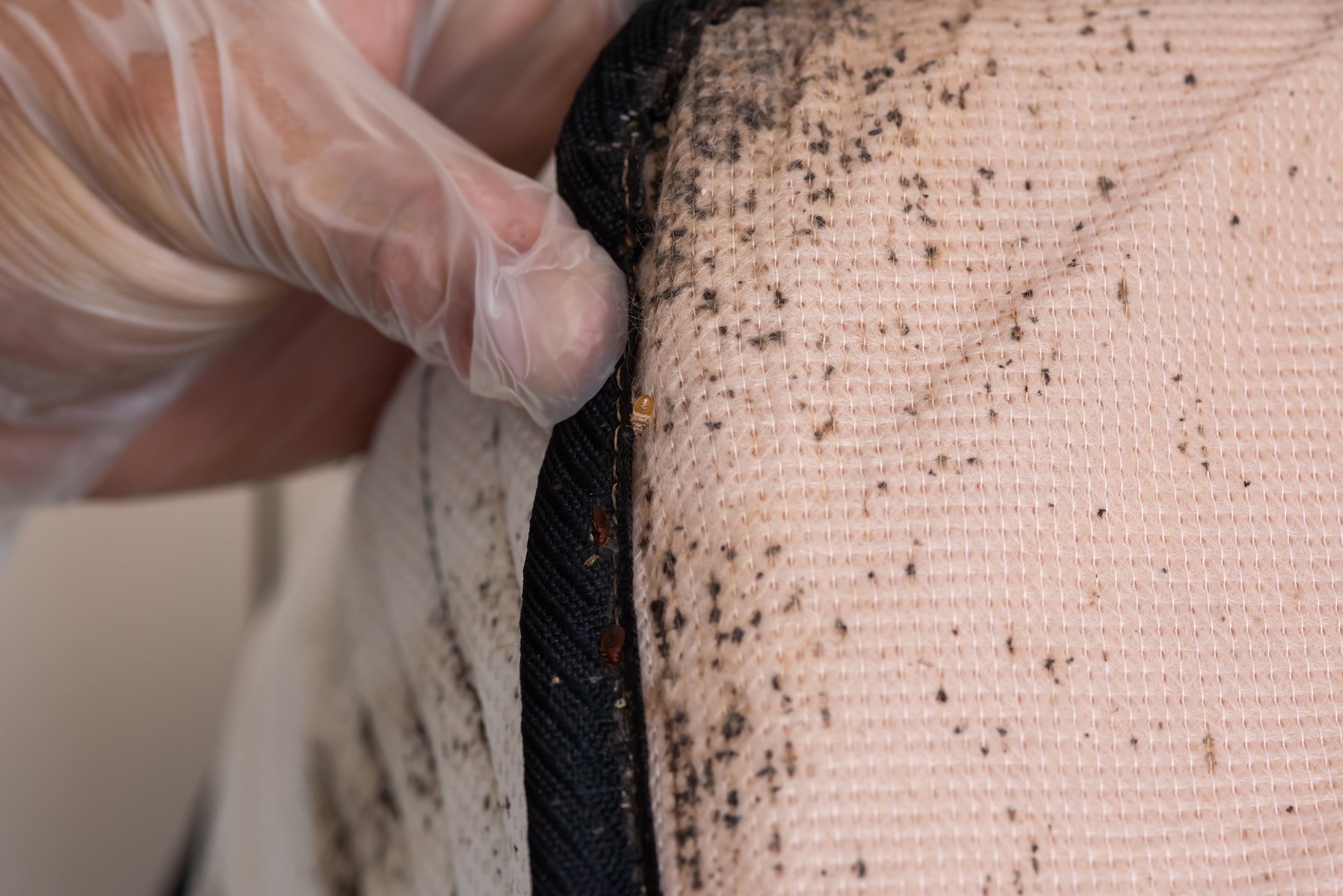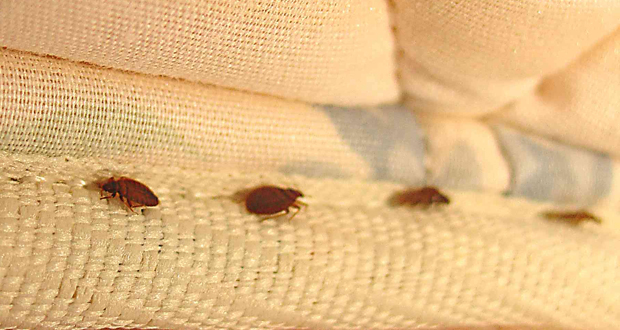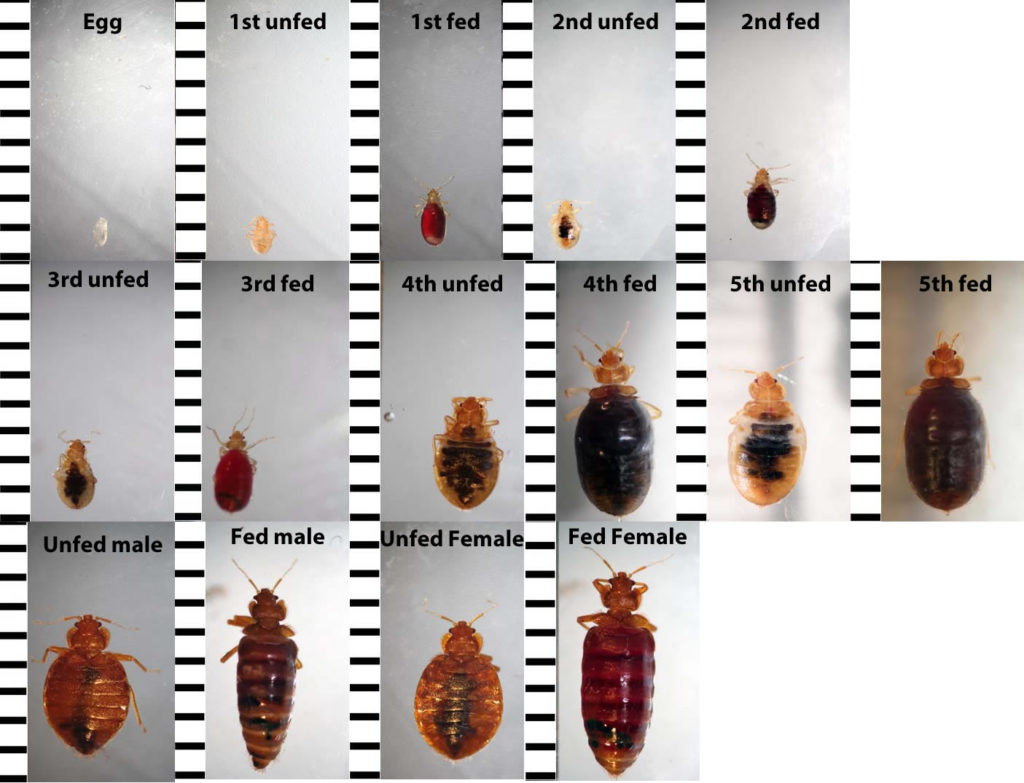Bed Bug Treatments in Florida
Exterminator Services for Deltona, DeLand, DeBary, Orange City, Eustis, and Lake Helen
Florida’s subtropical climate, celebrated for mild winters, elevated warmth, and appreciable humidity, can also encourage the spread of bed bugs—small parasitic insects that feed on human blood at night and stay concealed in furniture seams or mattress folds throughout the day. Although these pests often appear suddenly, they typically arrive quietly through secondhand goods or travel luggage, then proliferate within mattresses, couch cushions, or cracks near sleeping areas. In Deltona, as well as neighboring locations such as DeLand, DeBary, Orange City, Eustis, and Lake Helen, an overlooked bed bug presence can escalate swiftly, forcing occupants to endure itchy bites, restless nights, and the frustration of repeated laundering to subdue ongoing infestations. This service page elaborates on why bed bugs flourish in Florida’s environment, the signals that they may have taken hold, and why a professional bed bug exterminator for bed bug treatments is your most dependable route to restoring comfort and calm.
Understanding Florida’s Ant Population

- Mild, Short Winters
In colder states, long sub-zero temperatures often slow or kill bed bugs, giving property owners a natural reprieve. Florida’s winter seldom lingers at freezing levels, so bed bugs remain active year-round. Indoors, whether in a heated or air-conditioned property, conditions stay relatively steady—making it easy for bed bugs to breed continuously if occupant or caretaker vigilance lags. - Frequent Travel and Movement
Areas like Deltona see ongoing occupant transitions, short-term rentals, and secondhand furniture exchanges. Bed bugs easily hitch rides in hidden folds of suitcases, thrifted couches, or folded clothing. Once introduced, they seek out sleeping areas—mattress seams, baseboards, or behind headboards—to feed at night and hide during daytime. - Minimal Seasonal Dormancy
In northern regions, harsh winter drives bed bugs into semi-dormancy or severely reduces their breeding cycles for months. Around central Florida, mild winters impose no such break. A handful of bed bugs left after occupant attempts can multiply quickly without a seasonal slowdown, underscoring occupant or professional measures as essential to contain expansions. - Stable Indoor Temperatures
In heated or cooled Florida homes, bed bugs rarely face temperature extremes that might slow them. If occupant routines—like regularly checking bedding or vacuuming—are sporadic, bed bugs quietly thrive behind furniture or near sleeping quarters, taking advantage of consistent warmth and a nightly feeding host. - Tourism and Short-Term Stays
Areas near the St. Johns River and local highways often welcome visiting friends, tenants, or secondhand item trades. Bed bugs introduced in suitcases or hidden in used beds can settle in new locations unnoticed, feeding on unsuspecting sleepers. In multi-unit settings or tight-knit neighborhoods, bed bugs might spread if occupant vigilance or building-wide checks do not detect them promptly.
Signs of Bed Bug Activity
- Red, Itchy Bites
Bed bugs generally feed while occupants sleep, targeting exposed skin—arms, legs, or neck. These bites form small, red welts that may line up in rows or clusters. Some individuals develop minimal reactions, only noticing faint bumps, while others experience intense itching and inflamed welts. If occupant bites recur nightly without visible mosquitoes or fleas, bed bugs become a prime suspect. - Dark Spots or Rust-Like Stains on Bedding
After a bed bug feeds, it can be crushed inadvertently, leaving rust-colored smears on pillowcases or sheets. Additionally, bed bug droppings appear as tiny black or brownish flecks, often near the corners or seams of mattresses. Checking for these dark specks under fitted sheets or behind headboards clarifies ongoing feeding activities. - Shedded Skins and Whitish Eggs
As bed bugs mature through nymph stages, they molt, leaving translucent skins behind. Their eggs, about 1 millimeter in length, adhere to cracks or seams in bedding, furniture, or baseboards. Using a flashlight along mattress piping or couch seams may reveal these husks and eggs, confirming an active life cycle. - Possible Musty Odor
Larger bed bug populations emit a sweetish, musty smell due to their pheromones. Smaller colonies might not produce a noticeable odor; rely primarily on physical clues like bites, droppings, or eggs for accurate detection. - Live Bugs in Seams or Crevices
Adult bed bugs measure about 5–7 millimeters, with flattened, oval bodies turning reddish-brown after feeding. Nymphs are smaller and lighter. Disturbing bed frames or flipping couch cushions can occasionally reveal them scurrying toward darker areas if occupant or caretaker efforts do not hamper them first.

Consequences of Neglecting Bed Bugs
- Exponential Reproduction
A single female bed bug lays multiple eggs daily. Within weeks, a minor issue can escalate to dozens or hundreds feeding nightly, crawling into adjacent rooms or even neighboring units if occupant or building cooperation is lacking. - Stress and Sleeplessness
Sharing a space with blood-feeding insects fosters occupant anxiety, overshadowing rest as people fear new bites each evening. Over time, families or staff might launder bedding constantly or avoid certain rooms entirely. Eliminating bed bugs swiftly restores occupant peace and normal sleep patterns. - Potential Spread to Neighbors
In multi-family buildings—like apartments, condos, or large homes—bed bugs traverse piping or electrical conduits if occupant solutions remain incomplete. Coordinated building checks hamper expansions across shared walls or floors. - Damage to Business or Reputation
For short-term rentals, hotels, or bed-and-breakfast venues, occupant sightings of bed bugs can spur negative reviews or occupant distress if not resolved quickly. Prompt occupant or professional action retains occupant trust and property credibility.
Why a Professional Exterminator Is Crucial
- Comprehensive Inspection
A bed bug exterminator scours mattresses, box springs, upholstered furniture seams, baseboards, and cracks behind headboards, searching for droppings, eggs, or adult bugs. Identifying the infestation’s extent shapes whether occupant-based cleaning plus localized chemical use suffices or if more robust solutions—like heat treatments—are warranted. - Eradicating All Life Stages
Bed bugs exist as eggs, nymphs, and adults. Partial occupant attempts might eliminate visible adults but spare hidden eggs. Professionals employ multi-step treatments—like steam, vacuuming, insect growth regulators, or entire-room heat—to kill bed bugs comprehensively at every stage. - Precise Chemical or Heat Application
Over-the-counter bug bombs might scatter bed bugs deeper into wall voids or saturate occupant areas with chemicals. Experts target insecticides exactly where bed bugs hide (e.g., bed frames, cracks, furniture folds), limiting occupant or pet exposure. Occupants typically wait for dryness or airing out, then resume daily routines, while bed bugs face lethal coverage. - Post-Treatment Monitoring
Since eggs hatch around two weeks after being laid, occupant or scheduled re-checks confirm newly emerged nymphs also meet lethal conditions. If occupant sightings persist—like new bites or black specks—follow-up treatments finalize occupant relief, sparing them from repeated laundry cycles or potential re-infestations.
Potential Approaches for Bed Bug Treatments
- Vacuuming and Steam
Vacuuming surfaces removes adult bed bugs and some eggs, reducing immediate populations before insecticidal measures. Occupants seal vacuum contents in plastic outdoors. Steam—superheated—kills bed bugs and eggs on contact, penetrating deeper folds or seams. Combining vacuuming and steam significantly reduces bed bug density swiftly. - Insect Growth Regulators and Residual Sprays
IGRs disrupt egg or nymph development, blocking future reproduction cycles. Residual insecticides create lethal zones around bed frames, baseboards, or furniture edges. Occupants generally leave treated areas briefly until products dry. This approach kills bed bugs encountering these barriers days or weeks after application. - Heat Treatments
For advanced or multiple-room infestations, raising indoor temperatures above ~120°F exterminates bed bugs and eggs in walls, electronics, or hidden corners. Occupants temporarily vacate, returning once the environment cools. Heat saturates areas sprays might not reach effectively, ensuring a thorough kill if occupant sightings spanned multiple rooms. - Mattress Encasements and Interceptors
Enclosing mattresses or box springs in bed bug–proof covers traps any leftover insects inside, depriving them of hosts. Interceptors under bed legs reveal any bed bug movement to or from the bed, letting occupant or professionals gauge if new activity emerges post-treatment. - Follow-Up Checks
Because bed bug eggs may hatch days after occupant or professional coverage, re-checking the environment helps verify no leftover pockets remain. If occupant sightings continue—like fresh bites or black flecks—an additional round of spot treatments or re-inspections finalizes occupant confidence.

Locations We Serve: Deltona, DeLand, DeBary, Orange City, Eustis, Lake Helen
Deltona: A rapidly growing residential hub where occupant transitions—whether short-term rentals or new home purchases—can inadvertently bring bed bugs via used furniture or luggage. Swift occupant checks (like scanning bedding for droppings) plus professional synergy hamper expansions across multiple rooms.
DeLand: With a historic downtown and older homes, DeLand’s environment can allow bed bugs to hide in antique furniture or behind structural cracks if occupant housekeeping is minimal. Quick occupant action upon noticing red bites or musty bed bug odors combined with thorough treatment methods keeps them from spreading widely.
DeBary: A suburban area bridging older farmland and new developments, DeBary can see bed bugs introduced in secondhand décor or personal items. Occupants verifying used furniture for black specks and vacuuming regularly hamper bed bug infiltration, while professional interventions confirm total eradication behind wall voids or in mattress seams.
Orange City: Known for quaint residential zones, occupant changes or short-term visitors might unwittingly transport bed bugs. Checking bedding edges or couch folds for black pepper-like droppings fosters occupant readiness if occupant sees repeated bites or suspicious welts.
Eustis: Scenic lakes and a small-town vibe characterize Eustis, but bed bugs remain year-round pests if occupant vigilance lags, especially when older furnishings or travel items harbor them. Occupants combining vacuuming carpets with encasing mattresses prevents bed bugs from overtaking bedrooms or living areas.
Lake Helen: A peaceful community where mild climate fosters near-constant bed bug breeding indoors if occupant or caretaker measures fail to detect early signs. Quick occupant response—like verifying suspicious black specks or vacuuming bedroom corners—and specialized solutions ensure minimal infiltration.
Why Our Bed Bug Treatments Succeed
- Florida-Adjusted Methods
Because Florida seldom sees the cold snaps limiting bed bug breeding, occupant synergy—like discarding clutter or sealing cracks—and robust extermination solutions (chemical, steam, or heat) handle bed bugs in all life stages. This synergy addresses bed bug cycles effectively in a year-round mild climate. - Exact and Low-Risk Applications
We direct insecticides or steam precisely where bed bugs hide—seams, corners, baseboards—limiting occupant or pet chemical exposure. Occupants typically wait a short time for dryness or ventilation, after which normal routines resume while bed bugs face lethal conditions. - Focus on Prevention
Beyond clearing a current infestation, occupant-based strategies—like encasing mattresses, vacuuming often, or scanning secondhand goods—deny bed bugs fresh opportunities to nest. This occupant plus professional combination yields ongoing bed bug deterrence. - Follow-Up for Assurance
Because bed bug eggs hatch around two weeks after being laid, occupant re-checks or planned revisit confirm no leftover nymphs survive. If occupant sightings or bites persist, additional spot treatments finalize occupant comfort, guaranteeing no hidden clusters endure behind walls or inside bedding.
Call to Action
Seeing odd bites upon waking, noticing rust-like smears on sheets, or spotting small insects in mattress seams? Contact us to learn more or schedule your service. Our bed bug exterminator strategies in Deltona, DeLand, DeBary, Orange City, Eustis, and Lake Helen thoroughly target bed bugs—covering eggs, nymphs, and adults—to restore occupant peace, healthful sleep, and a pest-free environment. Acting swiftly spares you from repeated bites, occupant anxieties, or the stigma bed bug sightings can impose in shared residential or commercial settings.
Through occupant housekeeping—like routine vacuuming, carefully inspecting second hand items, or isolating suspicious furniture—and integrated pest management—like insect growth regulators, steam, or entire-structure heat—bed bugs find no safe haven at any stage. Freed from these stealthy, nighttime feeders, central Florida property owners enjoy restful nights, minimal daily disruptions, and unwavering confidence that no unseen pests lurk within furniture or behind wall cracks.
